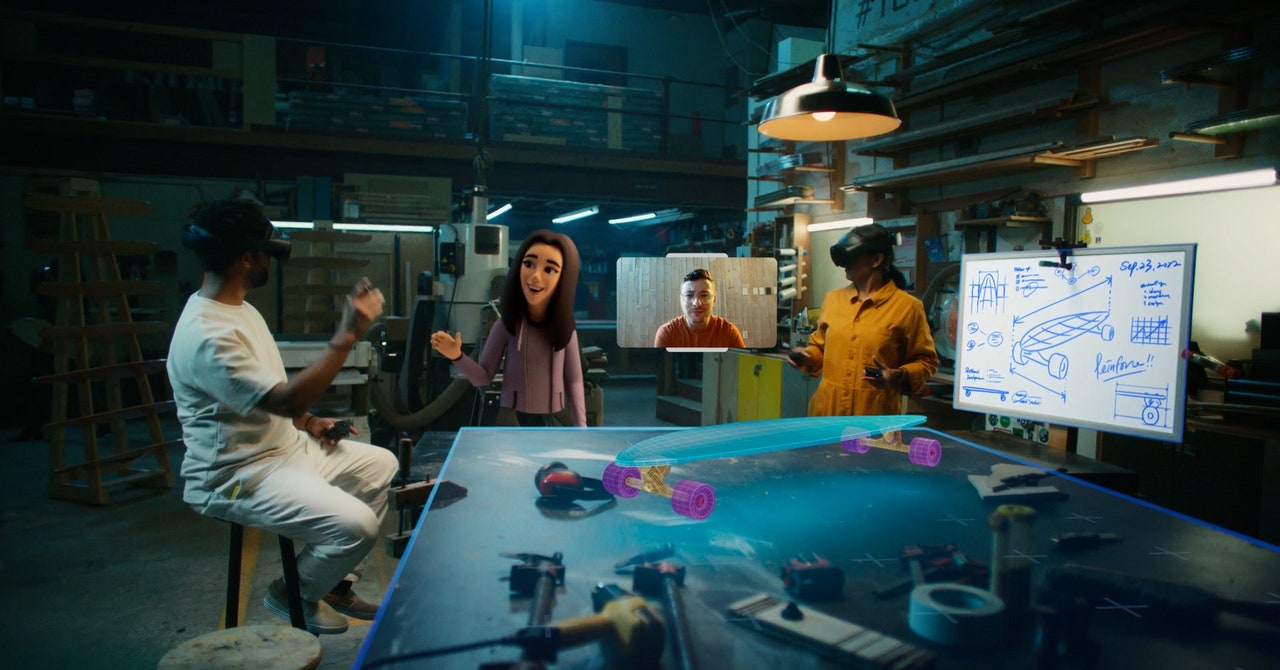It’s a rhetorical question, but LeBeau’s statements when we met at Workrooms for an interview a few weeks ago suggest he objects to the premise. For starters, people don’t spend their lives in VR. Sessions usually last 15 minutes to an hour, rarely more than two, he says. The cost is lower on average than many smartphones, having dropped significantly since the first-generation Oculus Rift debuted in 2016 at $600.
And while LeBeau declines to share specific numbers, he says it helps keep teams at bay who want to discuss issues together, ostensibly face-to-face. Updates planned for 2023 will make Workrooms more appealing to hybrid teams, he says. These include an option to view 3D models and a mixed reality experience known as the Magic Room that allows on-site and remote employees to collaborate in the same shared space. Integrations with Zoom, Microsoft Teams and Windows are also on the way in 2023.
Early testers have mixed opinions about whether the offering is ready for prime time. Trevor Ainge, a media and content specialist at s2s, says Workrooms’ first-person perspective – the feeling of occupying the same space as your colleagues and having to physically twist your body to meet someone’s gaze – is a marked improvement over Zoom or WebEX.
“One of the things I particularly struggled with is the performative aspect of communication when you look at a screen and see yourself, and Workrooms absolutely crushes that for me,” says Ainge. “I find it much more natural to connect.”
Others are less convinced. “What you’re missing is the emotional part, because nobody recognizes your face,” said Sergey Toporov, a London-based partner at the investment firm LETA Capital, who trialled the software last summer. “They have a pretty good lip-sync feature that looks natural when you talk, but when you stop talking, you kind of start smiling, which is weird.”
The virtual blackboard has also drawn complaints from early testers. While s2s plans to continue using the software, LETA Capital dropped it after discovering that users could not interact with financial models in Google Sheets while on the virtual whiteboard. The digitally rendered board, which must be set up before entering Workrooms, can be written on by holding one of the two Quest controllers upside down and using it like a pen. But anything you write on the board, or the sticky notes you can stick on it, are just overlays; they do not change the original file displayed.
“Your first move is to grab your finger or your Oculus controller and put something in the cell,” says Toporov. “But basically you have to go back to your laptop, even if you see the image, and use your keyboard to change the value.”
Typing in Workrooms can also be a bit of an adventure, says Ari Lightman, a professor of digital media and marketing at Carnegie Mellon University who trialled Workrooms with graduate students in his Meten social class.
“I can’t remember what the text string was, but imagine the worst autocorrect ever. It was all crazy and blurry,” he says. As a workaround, Lightman eventually removed the headset to type notes on the Meta Remote Desktop app with his physical keyboard.
Before the work can be done there’s the rather tedious process of charging the headset (the battery takes about two and a half hours to charge and lasts about that), connecting the headset to a Meta Quest smartphone app, create an account and go through a long series of authentications. To avoid crashing into a nearby wall or armchair, users must also set up a laser-like 3D point cloud called a Guardian that appears when they’re close to predetermined room boundaries. All of this begs the question of whether the investment is worth it for a 30-minute or an hour-long meeting, while other video conferencing platforms allow users to get in without an account in a matter of clicks.

